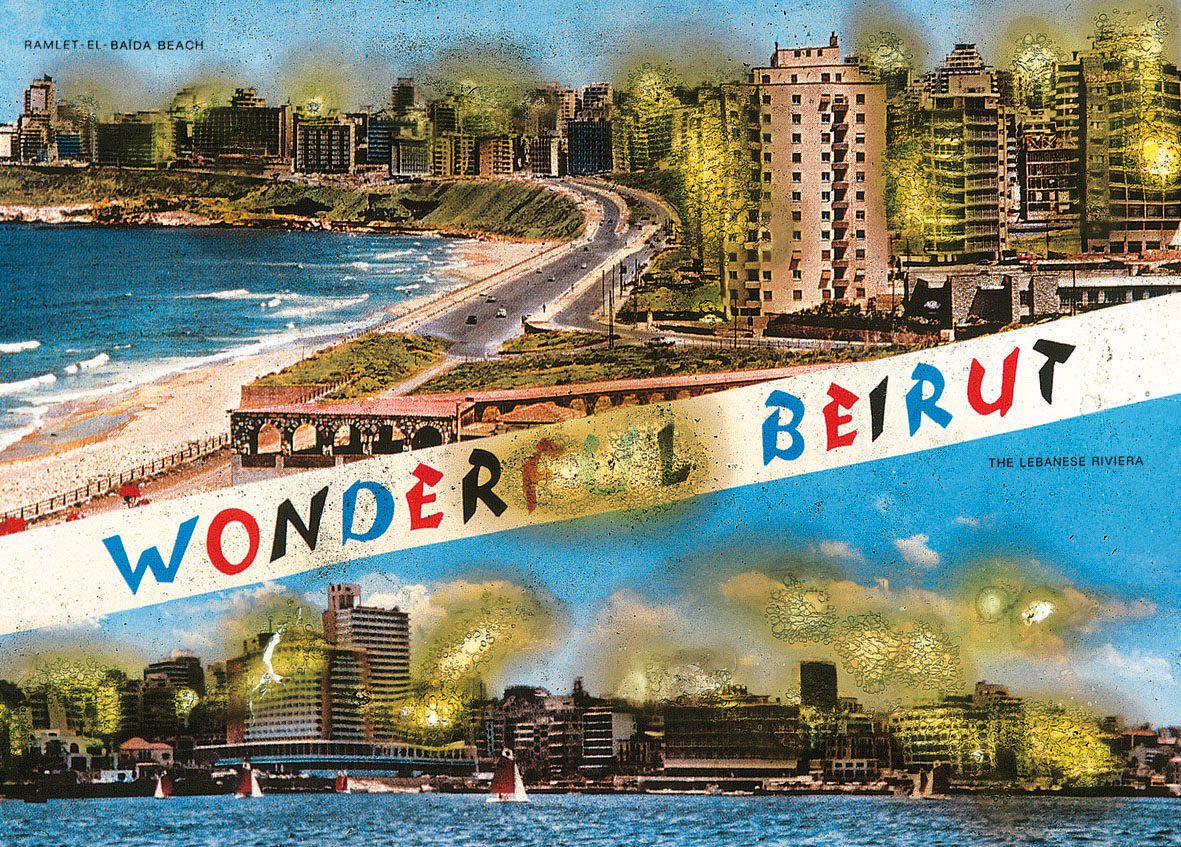Out of Beirut took place at Modern Art Oxford between 13 May and 16 July 2006.

Postcards of war
From Wonder Beirut: The story of a pyromaniac photographer
1998 – 2006
Courtesy of the Artist
In 2006, Modern Art Oxford held the most comprehensive exhibition of work in the UK to date by a collective of emerging artists from Beirut. During the course of Out of Beirut, Modern Art Oxford hosted a programme of performances in the city, a series of film screenings specially conceived by Beirut-based curator Christina Tohme, which presented the work of film makers from the Middle East and Turkey, and a symposium titled Public Time, featuring a panel of international scholars critically debating the issues facing contemporary artists in Beirut.
The artists and architects who took part in Out of Beirut were Fadi Abdallah, Ziad Abillame, Tony Chakar, Ali Cherri, Joana Hadjithomas and Khalil Joreige, Heartland, Lamia Joreige, Gilbert Hage, Bilal Khbeiz, Bernard Khoury, Rabih Mroue, Walid Raad, Walid Sadek, Jalal Toufic, Paola Yacoob, Michel Lasserre and Akram Zaatari.
The exhibition, symposium and events offered insight into the artistic and literary practices produced beyond the Lebanese Civil War (1975-1990). Out of Beirut had further impact on audiences visiting the exhibition as only two months after the opening night, the 2006 Lebanon War (12 July – 14 August 2006) erupted.
The work of these artists offered persuasive arguments for how art practices are a space of engagement with a conflicted present. One of the works featured in the exhibition dealt with defining the limits of terrain through personal recollection and memory. Lamia Joreige, recorded her walk through Beirut along the Green Line that divided East and West Beirut, as she interviewed locals about those who went missing during the war in her documentary video Here and Perhaps Elsewhere (2003).
Lebanese architect Bernard Khoury’s film B018 (1998) dealt with the relationship of amnesia and historical trace by erecting a temporary structure in the form of an underground nightclub called BO18, at the old quarantine area of the port, known as a place used for torture during the war.
Dealing with fragments was the primary concern of Abdallah Farah, who took a set of postcards of attractions around Beirut captured in 1968, of which few still stood. Farah then subjected these postcards to immolation, burning the negatives so as to match the destruction of the fragments that he saw in their place.
Perhaps more relevant today than ever before, the polyphony of voices presented in Out of Beirut offered a compelling take on truth by focusing on what was believed, imagined, and known, epitomised in Walid Raad’s statement: “It is not so much of what is true but what rings true to the human psyche”.
Written by Ariana Evelyn Kalliga, a student in History of Art at the University of Oxford.



